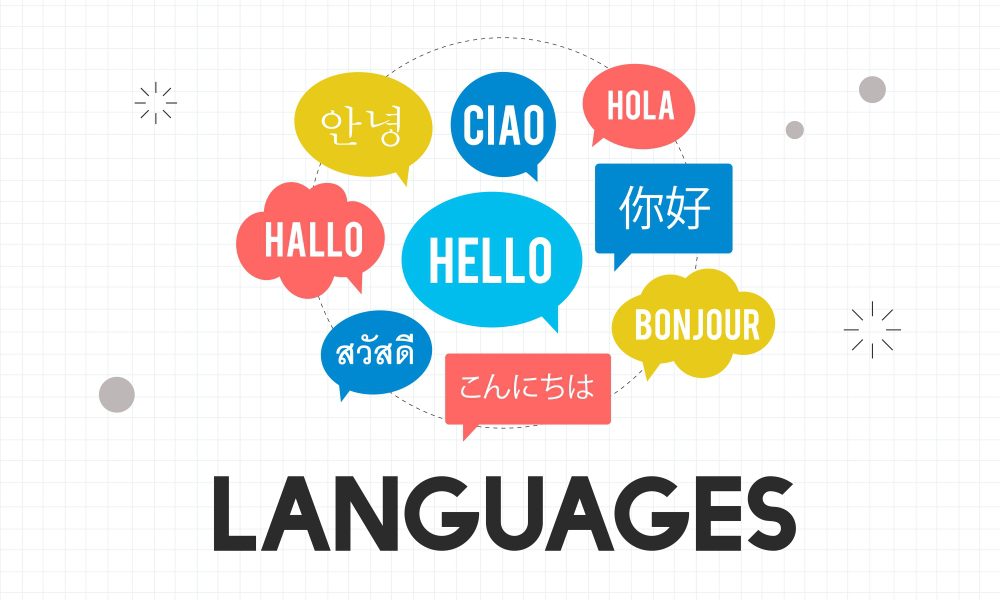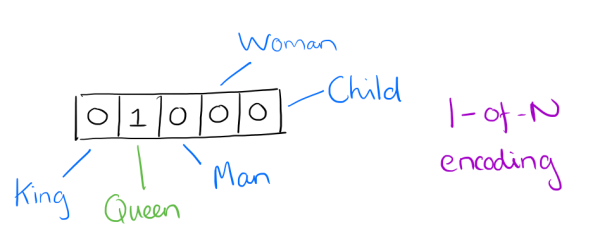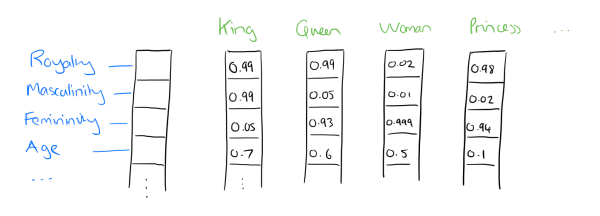There is no shortage of text data available today. Vast amounts of text are created each and every day, with this data ranging from fully structured to semi-structured to fully unstructured.
What can we do with this text? Well, quite a bit, actually; depending on exactly what your objectives are, there are 2 intricately related yet differentiated umbrellas of tasks which can be exploited in order to leverage the availability of all of this data.
Let’s start with some definitions.
Xử lý ngôn ngữ tự nhiên (NLP) concerns itself with the interaction between natural human languages and computing devices. NLP is a major aspect of computational linguistics, and also falls within the realms of computer science and artificial intelligence.
Khai thác văn bản exists in a similar realm as NLP, in that it is concerned with identifying interesting, non-trivial patterns in textual data.
As you may be able to tell from the above, the exact boundaries of these 2 concepts are not well-defined and agreed-upon, and bleed into one another to varying degrees, depending on the practitioners and researchers with whom one would discuss such matters. I find it easiest to differentiate by degree of insight. If raw text is data, then text mining can extract thông tin, while NLP extracts kiến thức (see the Pyramid of Understanding below). Syntax versus semantics, if you will.

The Pyramid of Understanding: data, information, knowledge
Various other explanations as to the precise relationship between text mining and NLP exist, and you are free to find something that works better for you. We aren’t really as concerned with the chính xác definitions — absolute or relative — as much as we are with the intuitive recognition that the concepts are related with some overlap, yet still distinct.
The point we will move forward with: although NLP and text mining are not the same thing, they are closely related, deal with the same raw data type, and have some crossover in their uses. For the remainder of our discussion, we will conveniently refer to these 2 concepts as NLP. Importantly, much of the preprocessing of data for the tasks falling under these 2 umbrellas is identical.
Regardless of the exact NLP task you are looking to perform, maintaining text meaning and avoiding ambiguity is paramount. As such, attempts to avoid ambiguity is a large part of the text preprocessing process. We want to preserve intended meaning while eliminating noise. In order to do so, the following is required:
- Knowledge about language
- Knowledge about the world
- A way to combine knowledge sources
If this were easy, we likely wouldn’t be talking about it. What are some reasons why processing text is difficult?

Source: CS124 Stanford (https://web.stanford.edu/class/cs124/)
You may have noticed something curious about the above: “non-standard English.” While certainly not the intention of the figure — we are taking it fully out of context here — for a variety of reasons, much of NLP research has historically taken place within the confines of the English language. So we can add to the question of “Why is processing text difficult?” the additional layers of trouble which non-English languages — and especially languages with smaller numbers of speakers, or even ngôn ngữ có nguy cơ tuyệt chủng — must go through in order to be processed and have insights drawn from.
Just being cognizant of the fact that NLP ≠ English when thinking and speaking about NLP is one small way in which this bias can be stemmed.
Can we craft a sufficiently general framework for approaching textual data science tasks? It turns out that processing text is very similar to other non-text processing tasks, and so we can look to the KDD Process cho cảm hứng.
We can say that these are the main steps of a generic text-based task, one which falls under text mining or NLP.
1. Data Collection or Assembly
- Obtain or build corpus, which could be anything from emails, to the entire set of English Wikipedia articles, to our company’s financial reports, to the complete works of Shakespeare, to something different altogether
2. Xử lý trước dữ liệu
- Perform the preparation tasks on the raw text corpus in anticipation of text mining or NLP task
- Data preprocessing consists of a number of steps, any number of which may or not apply to a given task, but generally fall under the broad categories of tokenization, normalization, and substitution
3. Data Exploration & Visualization
- Regardless of what our data is — text or not — exploring and visualizing it is an essential step in gaining insight
- Common tasks may include visualizing word counts and distributions, generating wordclouds, and performing distance measures
4. Xây dựng mô hình
- This is where our bread and butter text mining or NLP task takes place (includes training and testing)
- Also includes feature selection & engineering when applicable
- Language models: Finite state machines, Markov models, vector space modeling of word meanings
- Machine learning classifiers: Naive bayes, logistic regression, decision trees, Support Vector Machines, neural networks
- Sequence models: Hidden Markov models, recursive neural networks (RNNs), Long short term memory neural networks (LSTMs)
5. Đánh giá mô hình
- Did the model perform as expected?
- Metrics will vary dependent on what type of text mining or NLP task
- Even thinking outside of the box with chatbots (an NLP task) or generative models: some form of evaluation is necessary
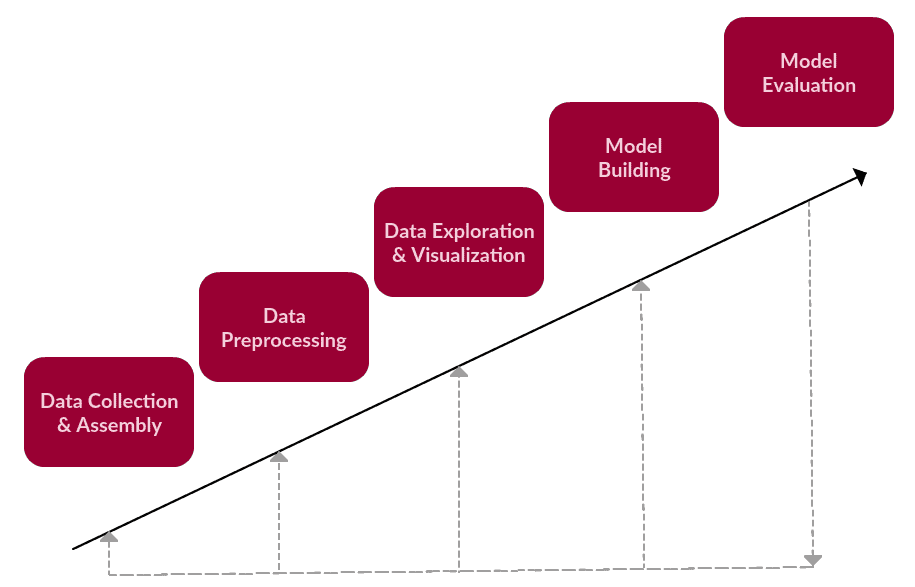
A simple textual data task framework
Clearly, any framework focused on the preprocessing of textual data would have to be synonymous with step number 2. Expanding upon this step, specifically, we had the following to say about what this step would likely entail:
- Perform the preparation tasks on the raw text corpus in anticipation of text mining or NLP task
- Data preprocessing consists of a number of steps, any number of which may or not apply to a given task, but generally fall under the broad categories of tokenization, normalization, and substitution
- More generally, we are interested in taking some predetermined body of text and performing upon it some basic analysis and transformations, in order to be left with artefacts which will be much more useful for performing some further, more meaningful analytic task afterward. This further task would be our core text mining or natural language processing work.
So, as mentioned above, it seems as though there are 3 main components of text preprocessing:
- mã thông báo
- bình thường
- subsitution
As we lay out a framework for approaching preprocessing, we should keep these high-level concepts in mind.
We will introduce this framework conceptually, independent of tools. We will then followup with a practical implementation of these steps next time, in order to see how they would be carried out in the Python ecosystem.
The sequence of these tasks is not necessarily as follows, and there can be some iteration upon them as well.
1. Noise Removal
Noise removal performs some of the substitution tasks of the framework. Noise removal is a much more task-specific section of the framework than are the following steps.
Keep in mind again that we are not dealing with a linear process, the steps of which must exclusively be applied in a specified order. Noise removal, therefore, can occur before or after the previously-outlined sections, or at some point between).
văn thể (literally Latin for body) refers to a collection of texts. Such collections may be formed of a single language of texts, or can span multiple languages; there are numerous reasons for which multilingual corpora (the plural of corpus) may be useful. Corpora may also consist of themed texts (historical, Biblical, etc.). Corpora are generally solely used for statistical linguistic analysis and hypothesis testing.
How about something more concrete. Let’s assume we obtained a corpus from the world wide web, and that it is housed in a raw web format. We can, then, assume that there is a high chance our text could be wrapped in HTML or XML tags. While this accounting for metadata can take place as part of the text collection or assembly process (step 1 of our textual data task framework), it depends on how the data was acquired and assembled. Sometimes we have control of this data collection and assembly process, and so our corpus may already have been de-noised during collection.
But this is not always the case. If the corpus you happen to be using is noisy, you have to deal with it. Recall that analytics tasks are often talked about as being 80% data preparation!
The good thing is that pattern matching can be your friend here, as can existing software tools built to deal with just such pattern matching tasks.
- remove text file headers, footers
- remove HTML, XML, etc. markup and metadata
- extract valuable data from other formats, such as JSON, or from within databases
- if you fear regular expressions, this could potentially be the part of text preprocessing in which your worst fears are realized
Biểu thức chính quy, thường được viết tắt regexp or regexp, là một phương pháp đã được thử nghiệm và thực sự để mô tả chính xác các mẫu văn bản. Biểu thức chính quy được biểu diễn dưới dạng một chuỗi văn bản đặc biệt và nhằm mục đích phát triển các mẫu tìm kiếm trên các lựa chọn văn bản. Biểu thức chính quy có thể được coi là một bộ quy tắc mở rộng ngoài các ký tự đại diện của ? và *. Mặc dù thường được cho là gây khó chịu khi học, nhưng biểu thức chính quy lại là công cụ tìm kiếm văn bản cực kỳ mạnh mẽ.
As you can imagine, the boundary between noise removal and data collection and assembly is a fuzzy one, and as such some noise removal must absolutely take place before other preprocessing steps. For example, any text required from a JSON structure would obviously need to be removed prior to tokenization.
2. Bình thường hóa
Before further processing, text needs to be normalized.
Bình thường hóa generally refers to a series of related tasks meant to put all text on a level playing field: converting all text to the same case (upper or lower), removing punctuation, expanding contractions, converting numbers to their word equivalents, and so on. Normalization puts all words on equal footing, and allows processing to proceed uniformly.
Normalizing text can mean performing a number of tasks, but for our framework we will approach normalization in 3 distinct steps: (1) stemming, (2) lemmatization, and (3) everything else.
running → run
Ví dụ: bắt nguồn từ từ “tốt hơn” sẽ không trả về dạng trích dẫn của nó (một từ khác cho bổ đề); tuy nhiên, việc từ vựng hóa sẽ dẫn đến kết quả như sau:
better → good
Có thể dễ dàng hiểu được tại sao việc triển khai một trình khởi tạo gốc lại là công việc ít khó khăn hơn trong cả hai.
Mọi thứ khác
A clever catch-all, right? Stemming and lemmatization are major parts of a text preprocessing endeavor, and as such they need to be treated with the respect they deserve. These aren’t simple text manipulation; they rely on detailed and nuanced understanding of grammatical rules and norms.
There are, however, numerous other steps that can be taken to help put all text on equal footing, many of which involve the comparatively simple ideas of substitution or removal. They are, however, no less important to the overall process. These include:
- set all characters to lowercase
- remove numbers (or convert numbers to textual representations)
- remove punctuation (generally part of tokenization, but still worth keeping in mind at this stage, even as confirmation)
- strip white space (also generally part of tokenization)
- remove default stop words (general English stop words)
The quick brown fox jumps over the lazy dog.
- remove given (task-specific) stop words
- remove sparse terms (not always necessary or helpful, though!)
A this point, it should be clear that text preprocessing relies heavily on pre-built dictionaries, databases, and rules. You will be relieved to find that when we undertake a practical text preprocessing task in the Python ecosystem in our next article that these pre-built support tools are readily available for our use; there is no need to be inventing our own wheels.
3. Mã hóa
Mã thông báo is, generally, an early step in the NLP process, a step which splits longer strings of text into smaller pieces, or tokens. Larger chunks of text can be tokenized into sentences, sentences can be tokenized into words, etc. Further processing is generally performed after a piece of text has been appropriately tokenized.
Tokenization is also referred to as text segmentation or lexical analysis. Sometimes phân khúc is used to refer to the breakdown of a large chunk of text into pieces larger than words (e.g. paragraphs or sentences), while tokenization is reserved for the breakdown process which results exclusively in words.
This may sound like a straightforward process, but it is anything but. How are sentences identified within larger bodies of text? Off the top of your head you probably say “sentence-ending punctuation,” and may even, just for a second, think that such a statement is unambiguous.
Sure, this sentence is easily identified with some basic segmentation rules:
The quick brown fox jumps over the lazy dog.
But what about this one:
Dr. Ford did not ask Col. Mustard the name of Mr. Smith's dog.
Hoặc cái này:
"What is all the fuss about?" asked Mr. Peters.
And that’s just sentences. What about words? Easy, right? Right?
This full-time student isn't living in on-campus housing, and she's not wanting to visit Hawai'i.
It should be intuitive that there are varying strategies not only for identifying segment boundaries, but also what to do when boundaries are reached. For example, we might employ a segmentation strategy which (correctly) identifies a particular boundary between word tokens as the apostrophe in the word cô ấy (a strategy tokenizing on whitespace alone would not be sufficient to recognize this). But we could then choose between competing strategies such as keeping the punctuation with one part of the word, or discarding it altogether. One of these approaches just seems correct, and does not seem to pose a real problem. But just think of all the other special cases in just the English language we would have to take into account.
Sự cân nhắc: when we segment text chunks into sentences, should we preserve sentence-ending delimiters? Are we interested in remembering where sentences ended?
We have covered some text (pre)processing steps useful for NLP tasks, but what about the tasks themselves?
There are no hard lines between these task types; however, many are fairly well-defined at this point. A given macro NLP task may include a variety of sub-tasks.
We first outlined the main approaches, since the technologies are often focused on for beginners, but it’s good to have a concrete idea of what types of NLP tasks there are. Below are the main categories of NLP tasks.
1. Text Classification Tasks
- Representation: bag of words, n-grams, one-hot encoding (sparse matrix) – these methods do not preserve word order
- Goal: predict tags, categories, sentiment
- Application: filtering spam emails, classifying documents based on dominant content
Cơ chế lưu trữ thực tế cho việc biểu diễn túi từ có thể khác nhau, nhưng sau đây là một ví dụ đơn giản sử dụng từ điển để mang lại tính trực quan. Văn bản mẫu:
"Well, well, well," said John.
“Đó, đó,” James nói. "Kia kia."
Kết quả là túi từ được biểu diễn dưới dạng từ điển:
{
'well': 3,
'said': 2,
'john': 1,
'there': 4,
'james': 1
}Một ví dụ về mô hình bát quái (3-gram) của câu thứ hai trong ví dụ trên (“Ở đó, ở đó,” James nói. “Ở đó, ở đó.”) xuất hiện dưới dạng biểu diễn danh sách bên dưới:
[
"there there said",
"there said james",
"said james there",
"james there there",
]
Prior to the wide-spread use of neural networks in NLP — in what we will refer to as “traditional” NLP — vectorization of text often occurred via mã hóa một nóng (note that this persists as a useful encoding practice for a number of exercises, and has not fallen out of fashion due to the use of neural networks). For one-hot encoding, each word, or token, in a text corresponds to a vector element.
We could consider the image above, for example, as a small excerpt of a vector representing the sentence “The queen entered the room.” Note that only the element for “queen” has been activated, while those for “king,” “man,” etc. have not. You can imagine how differently the one-hot vector representation of the sentence “The king was once a man, but is now a child” would appear in the same vector element section pictured above.
2. Word Sequence Tasks
- Representation: sequences (preserves word order)
- Goal: language modeling – predict next/previous word(s), text generation
- Application: translation, chatbots, sequence tagging (predict POS tags for each word in sequence), named entity recognition
Mô hình ngôn ngữ is the process of building a statistical language model which is meant to provide an estimate of a natural language. For a sequence of input words, the model would assign a probability to the entire sequence, which contributes to the estimated likelihood of various possible sequences. This can be especially useful for NLP applications which generate or predict text.
3. Text Meaning Tasks
- Representation: word vectors, the mapping of words to vectors (n-dimensional numeric vectors) aka embeddings
- Goal: how do we represent meaning?
- Application: finding similar words (similar vectors), sentence embeddings (as opposed to word embeddings), topic modeling, search, question answering
Dense embedding vectors aka word embeddings result in the representation of core features embedded into an embedding space of size d dimensions. We can compress, if you will, the number of dimensions used to represent 20,000 unique words down to, perhaps, 50 or 100 dimensions. In this approach, each feature no longer has its own dimension, and is instead mapped to a vector.
So, what exactly are these features? We leave it to a neural network to determine the important aspects of relationships between words. Though human interpretation of these features would not be precisely possible, the image above provides an insight into what the underlying process may look like, relating to the famous King - Man + Woman = Queen ví dụ.
Gắn thẻ một phần của bài phát biểu consists of assigning a category tag to the tokenized parts of a sentence. The most popular POS tagging would be identifying words as nouns, verbs, adjectives, etc.
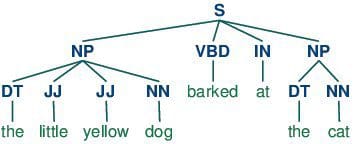
Gắn thẻ một phần của bài phát biểu
4. Sequence to Sequence Tasks
- Many tasks in NLP can be framed as such
- Examples are machine translation, summarization, simplification, Q&A systems
- Such systems are characterized by encoders and decoders, which work in complement to find a hidden representation of text, and to use that hidden representation
5. Dialog Systems
- 2 main categories of dialog systems, categorized by their scope of use
- Goal-oriented dialog systems focus on being useful in a particular, restricted domain; more precision, less generalizable
- Conversational dialog systems are concerned with being helpful or entertaining in a much more general context; less precision, more generalization
Whether it be in dialog systems or the practical difference between rule-based and more complex approaches to solving NLP tasks, note the trade-off between precision and generalizability; you generally sacrifice in one area for an increase in the other.
While not cut and dry, there are 3 main groups of approaches to solving NLP tasks.

Dependency parse tree using spaCy
1. Rule-based
Rule-based approaches are the oldest approaches to NLP. Why are they still used, you might ask? It’s because they are tried and true, and have been proven to work well. Rules applied to text can offer a lot of insight: think of what you can learn about arbitrary text by finding what words are nouns, or what verbs end in -ing, or whether a pattern recognizable as Python code can be identified. Biểu thức chính quy và context free grammars are textbook examples of rule-based approaches to NLP.
Rule-based approaches:
- tend to focus on pattern-matching or parsing
- can often be thought of as “fill in the blanks” methods
- are low precision, high recall, meaning they can have high performance in specific use cases, but often suffer performance degradation when generalized
2. “Traditional” Machine Learning
“Traditional” machine learning approaches include probabilistic modeling, likelihood maximization, and linear classifiers. Notably, these are not neural network models (see those below).
Traditional machine learning approaches are characterized by:
- training data – in this case, a corpus with markup
- feature engineering – word type, surrounding words, capitalized, plural, etc.
- training a model on parameters, followed by fitting on test data (typical of machine learning systems in general)
- inference (applying model to test data) characterized by finding most probable words, next word, best category, etc.
- “semantic slot filling”
3. Mạng thần kinh
This is similar to “traditional” machine learning, but with a few differences:
- feature engineering is generally skipped, as networks will “learn” important features (this is generally one of the claimed big benefits of using neural networks for NLP)
- instead, streams of raw parameters (“words” — actually vector representations of words) without engineered features, are fed into neural networks
- very large training corpus
Specific neural networks of use in NLP have “historically” included recurrent neural networks (RNNs) and convolutional neural networks (CNNs). Today, the one architecture that rules them all is the transformer.
Why use “traditional” machine learning (or rule-based) approaches for NLP?
- still good for sequence labeling (using probabilistic modeling)
- some ideas in neural networks are very similar to earlier methods (word2vec similar in concept to distributional semantic methods)
- use methods from traditional approaches to improve neural network approaches (for example, word alignments and attention mechanisms are similar)
Why deep learning over “traditional” machine learning?
- SOTA in many applications (for example, machine translation)
- a lot of research (majority?) in NLP happening here now
Quan trọng, both neural network and non-neural network approaches can be useful for contemporary NLP in their own right; they can also can be used or studied in tandem for maximum potential benefit
dự án
- Từ ngôn ngữ đến thông tin, Stanford
- Xử lý ngôn ngữ tự nhiên, National Research University Higher School of Economics (Coursera)
- Neural Network Methods for Natural Language Processing, Yoav Goldberg
- Xử lý ngôn ngữ tự nhiên, Yandex Data School
Matthew Mayo (@ mattmayo13) là Nhà khoa học dữ liệu và là Tổng biên tập của KDnuggets, nguồn tài nguyên về Khoa học dữ liệu và Máy học trực tuyến. Sở thích của anh ấy là về xử lý ngôn ngữ tự nhiên, thiết kế và tối ưu hóa thuật toán, học không giám sát, mạng nơ-ron và các phương pháp tiếp cận tự động đối với học máy. Matthew có bằng Thạc sĩ về khoa học máy tính và bằng tốt nghiệp về khai thác dữ liệu. Có thể liên hệ với anh ấy tại editor1 tại kdnuggets [dot] com.


